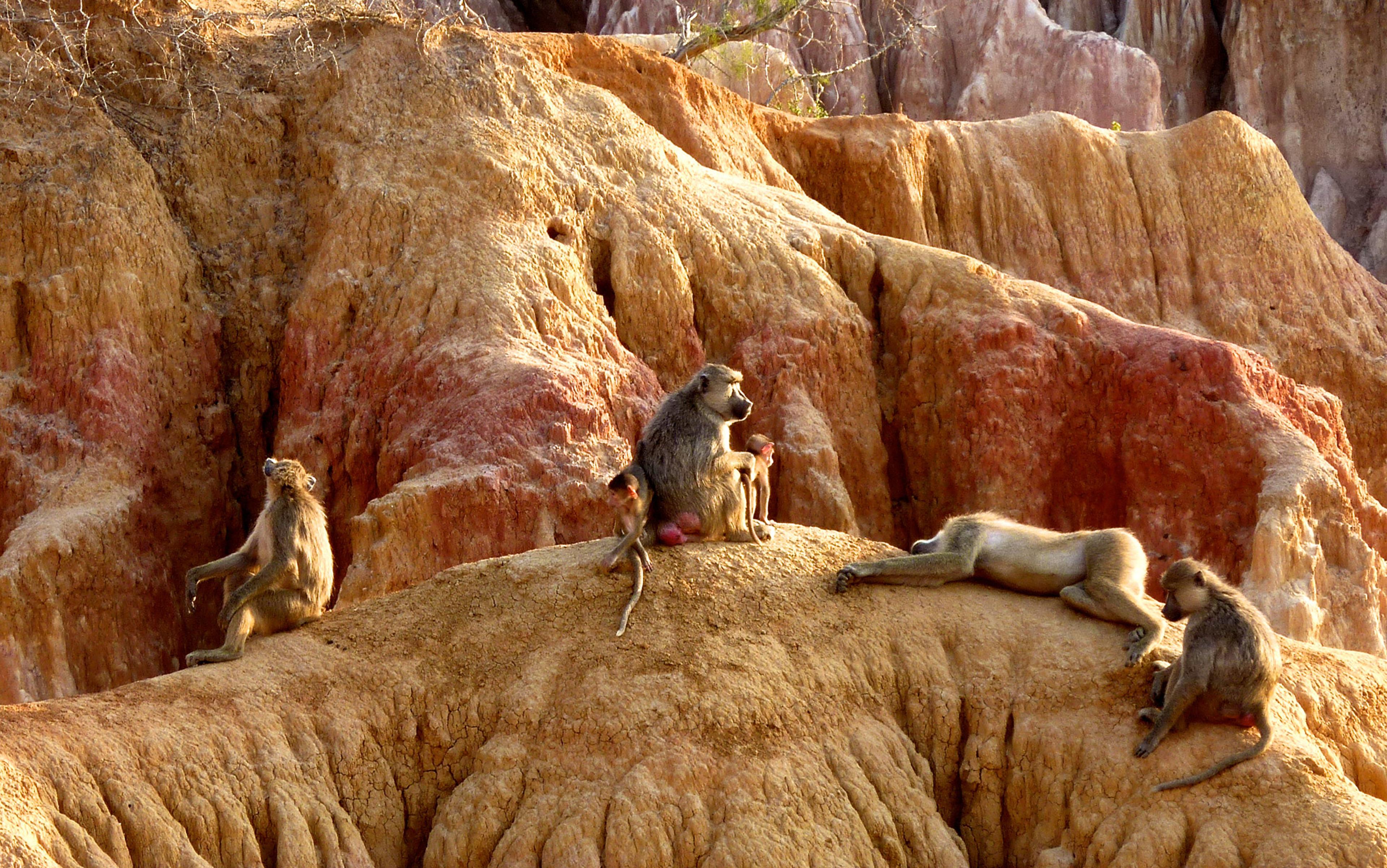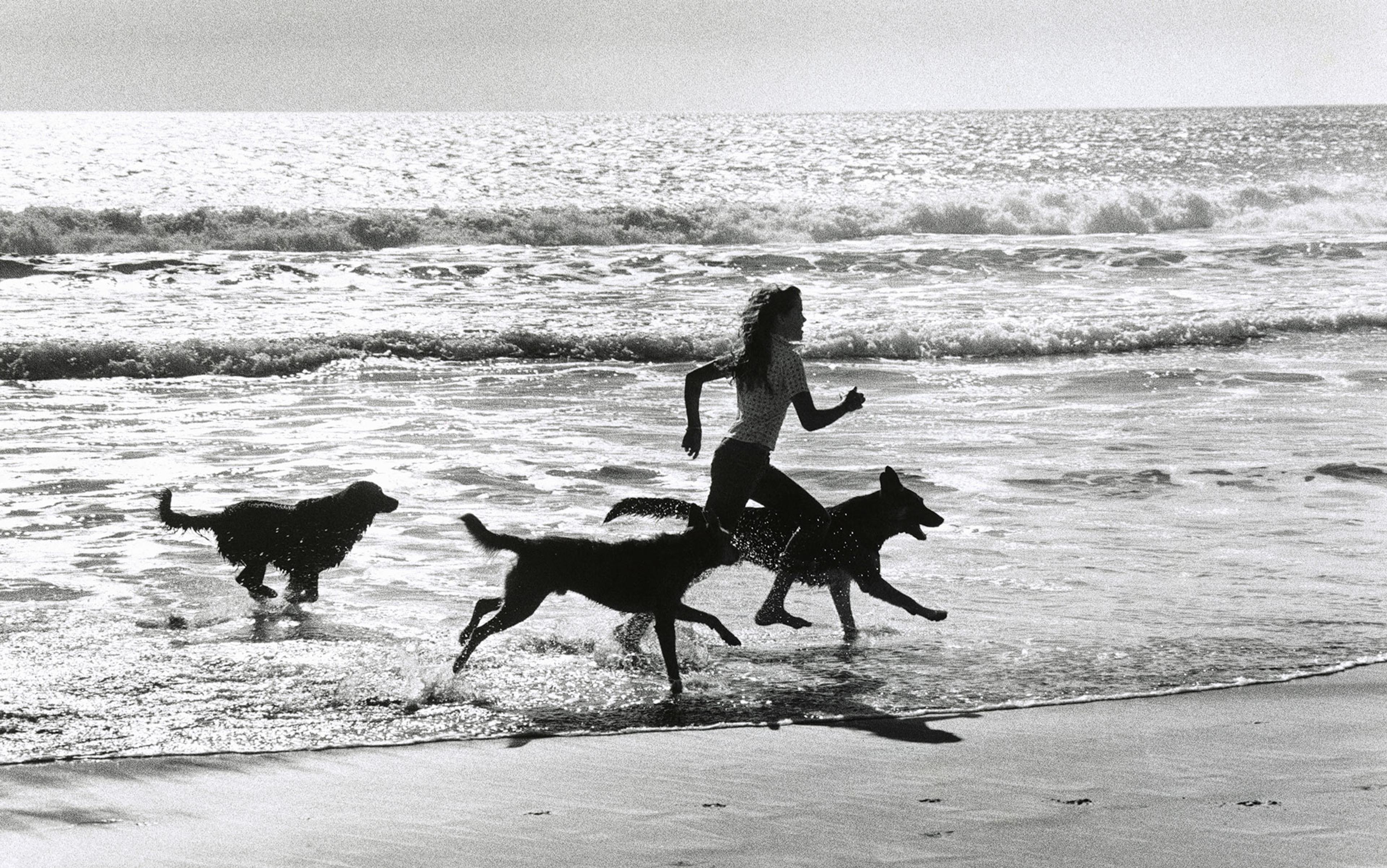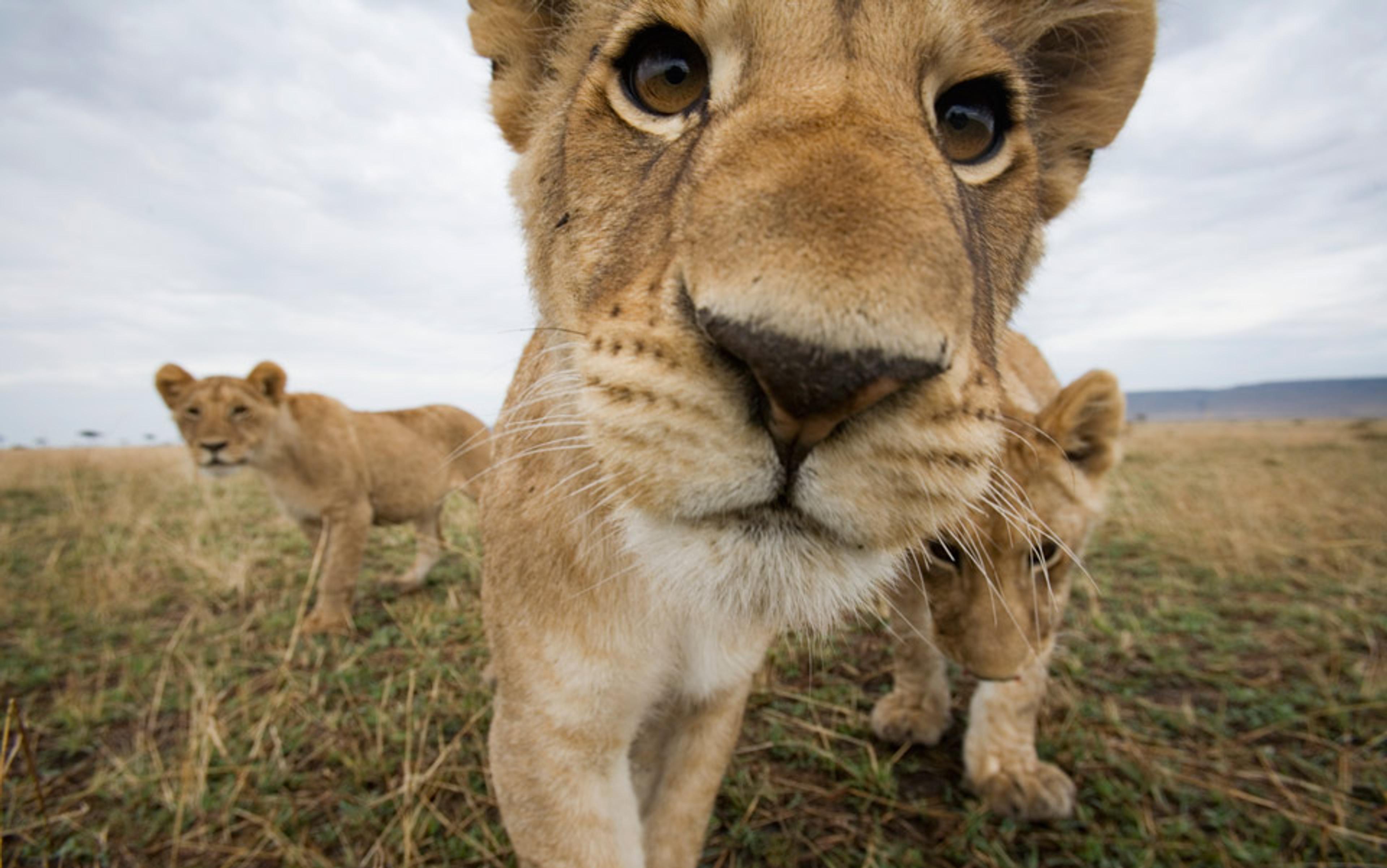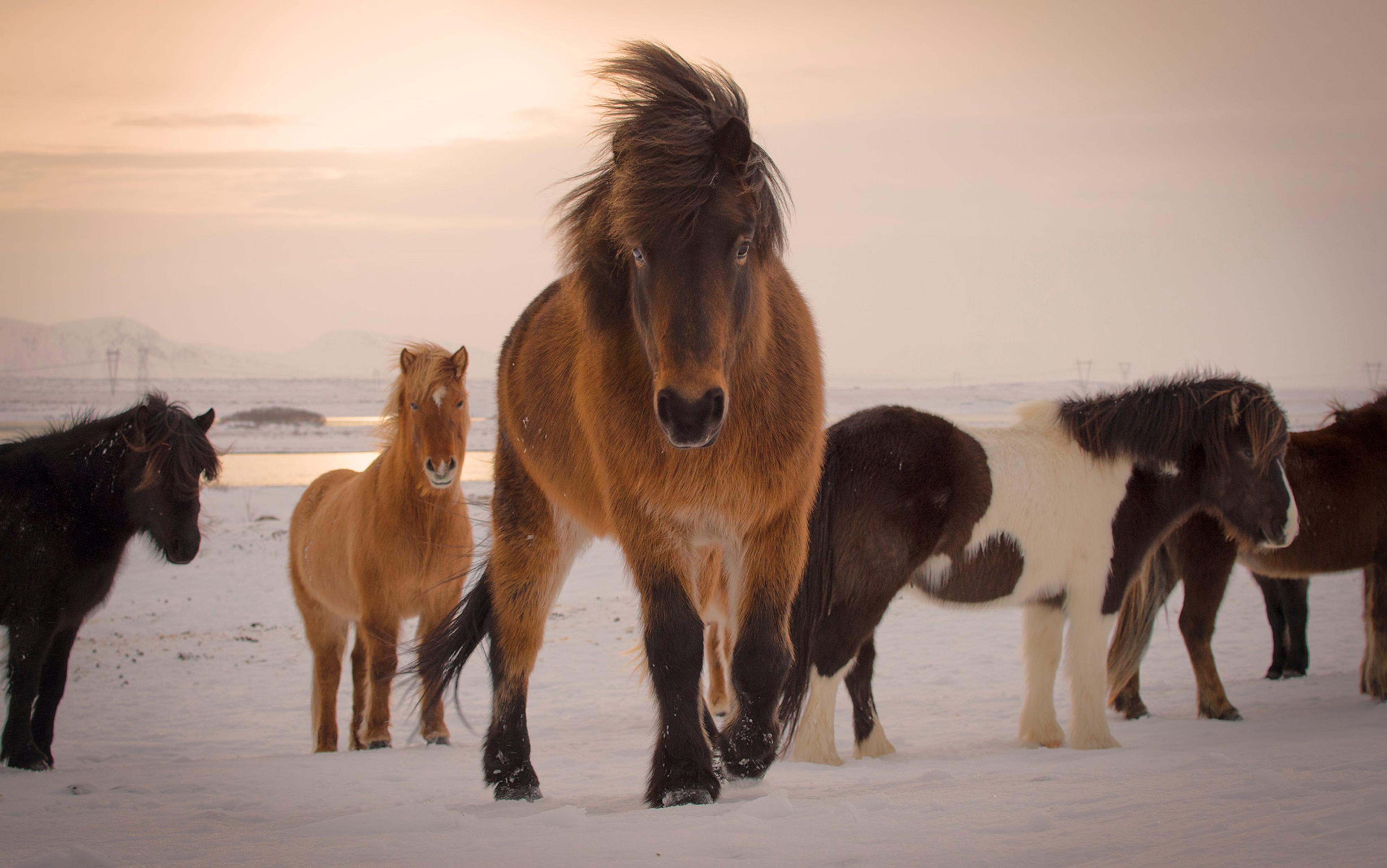Back in my baboon-watching days in Amboseli National Park, Kenya, all eyes — at least, mine and the savannah baboons’ — were on monkey matrilines. These tight networks of monkey mothers, grandmothers, daughters, aunts, and nieces formed the core of my study groups. The young males transferred out of these groups at puberty, to mate and live elsewhere, but the females stayed put and sorted themselves into kin lineages.
These allied females supported each other in competition for food against other matrilines, and groomed and rested together. They were, without question, bound together by blood. The anthropologist Joan Silk, professor at the University of California in Los Angeles, even showed that among baboons in Amboseli and in the Moremi Game Reserve in Botswana, the best predictor of bond strength in females was matrilineal kinship.
And it’s not only baboons. Most animals for whom we have data treat their kin differently from non-kin. When food resources are scarce, or a hungry predator appears in the midst of an animal group, it’s often relatives who help each other out. This makes good evolutionary sense: when one animal aids another who shares its genes, it boosts the chances that its own genes will be long-lived.
Nowadays, however, as I study and write about the expression of emotion in a variety of mammals, I have come to realise that this perspective is too limiting. If we make the biology of kinship the primary motivator for an animal’s behaviour, we might be slow to explore the nature of its other social relationships. Indeed, some scientists have begun to describe the close bonds between non-kin relatives as ‘friendships’, in species ranging from chimpanzees and elephants to domestic and farm animals. This is an encouraging trend. I think we can go further, especially by borrowing a new concept from anthropology that Marshall Sahlins calls mutuality of being.
Mutuality of being refers to a special type of relationship, one that overlaps with friendship but has its own distinct qualities. To qualify as friends, two animals must engage in positive social interactions beyond the context of mating and reproduction. In her pioneering field study Sex and Friendship in Baboons (1985), Barbara Smuts used grooming and proximity to decide which male and female baboons were friends. More broadly, the anthropologists Robert Seyfarth and Dorothy Cheney, professors at the University of Pennsylvania, define friendships as close, enduring social bonds, including those that form between males and between females.
Mutuality of being can encompass these behaviours, but requires something more. Although Sahlins’s definition refers only to humans, it’s a helpful starting point. Mutuality of being, he writes in What Kinship Is — And Is Not (2013), comes about when people are ‘co-present in each other’. More than just spending time together, the individuals involved remain emotionally and cognitively taken up with each other’s lives even when they are not together. Through mutuality of being, two or more people can become kin, even in the absence of any biological relationship. Sahlins emphasises that when genes come into play in determining which humans are related to whom, it’s because the cultural system in which people live constructs the notion of kinship around genetics. But kinship doesn’t have to operate this way.
The survivor grieved for his lost companion, a sign that the two apes’ lives were closely entwined beyond their moment-to-moment coexistence
Among the Ku Waru people of New Guinea, for example, children become kin through an essential substance called kopong (grease) which originates in the soil. The Ku Waru call both father’s sperm and mother’s milk kopong, and it is through these two sources that conception of a child is said to occur. However, sweet potatoes and pork also contain kopong, and when people share these foods, the same fundamental connection emerges between them as does between parent and child: they become kin. The offspring of two Ku Waru brothers, Sahlins says, are ‘as much related because they were sustained by the same soil as because their fathers were born of the same parents’. The children of immigrants to the community become full kin with those who share no genes with them by carrying out socially inscribed practices around kopong.
For the Nyakyusa of the African Rift Valley, children of roughly the same age who reside in the same village are also thought of as kin. And if relatives by marriage are given cattle, they too become kin. No biological tie is necessary.
Sahlins describes the Eskimo-speaking peoples as ‘the world champions of post-natal kinship’. They often express unstable kinship relationships that are ‘continuously vulnerable to events and ever subject to negotiation’. While in the West people might sigh, ‘You can choose your friends but you can’t choose your family’, Eskimo-speakers (and the Inuit especially) do choose their own kin. Among the Inupiat peoples of Alaska, kinship status is determined by who names a child, and children are named after dead persons, becoming integrated into the families of their namesakes. But there isn’t a singular naming event in a person’s life: an adult might end up with five names and five families.
According to Sahlins, what matters for kinship in most societies around the world isn’t genes but other factors, such as living in the same place and sharing food, labour, and memories. The self might even be understood not as a single individual, but as an individual plus his or her kin. For instance, when a Maori person uses the pronoun ‘I’, he invokes a kinship group both past and present, and by extension perhaps a group’s entire history. This might be hard to grasp for those of us raised on Western notions of individualism, but when a Maori man narrates a fight and casts himself in the starring role, he could be reporting an event that played out many generations ago before his own birth.
With humans, Sahlins is very inclusive as to what counts as mutuality of being, but he is less generous when it comes to animals. In his framework, animals cannot achieve mutuality of being, despite the fact that we now know they have rich emotional lives. So I think a more expansive search for mutuality of being is in order. If we can find evidence of a pervasive emotional connection between individual animals that share residence, labour, food, and memories, we can make a case for non-biological kinship in the animal kingdom.
Our closest living relatives, chimpanzees, make for a case in point. For many years, I taught my biological anthropology students that male chimpanzee social bonds and alliances are organised around genetic relationships. Both evolutionary theory and animal-behaviour fieldwork offered much support for this conclusion. A prediction of social preferences by males based on kin-selection would make sense in a chimpanzee community, where males are much more likely to be kin than females who emigrate to another community at puberty. Jane Goodall’s long-term field research on the chimpanzees of Gombe, Tanzania, pointed to this conclusion as well. Male kin were natural allies, she reported, illustrating her point with vivid anecdotes about the chimp Figan, who reigned as alpha male for six years in the 1970s because of extensive support from his older brother Faben.
However, the social structures of chimpanzees have turned out to be much more complicated than originally thought. The primatologist John Mitani and his research team at the University of Michigan showed that male relationships among chimpanzees at Ngogo in Kibale National Park, Uganda, are not driven by genetic kinship. Using mitochondrial DNA analysis, Mitani demonstrated that these chimps’ matrilineal relatedness was not correlated with affiliation (as defined by measures of association, proximity, and grooming) nor with co-operation (which involved alliances, meat sharing and boundary patrols). Instead, non-related males routinely expressed close bonds through their everyday activities.
Grace, using her trunk and one foot, probed Eleanor’s body, then with her tusks lifted Eleanor back upright
But even if chimpanzees readily become allies and friends with their non-relatives, does this count as mutuality of being? We need evidence of that hard-to-quantify metric: lives that are co-joined intensely and emotionally. For this task, quantitative data alone are not enough. Luckily, we have qualitative data, too. In a Time magazine cover story on animal friendships in 2012, Mitani described two Ngogo chimpanzees named Hare and Ellington that hunted together and shared their kills. All Ellington had to do to get a piece of prized meat from Hare was to extend his hand, and the two were allies whenever conflict arose. But there was more going on between them than straightforward teamwork in aid of survival.
‘Hare and Ellington would spend entire days travelling through the forest together,’ noted the science writer Carl Zimmer, who interviewed Mitani. ‘Sometimes they’d be side by side. Other times they’d be 100 yards apart, staying in touch through the foliage, with loud, hooting calls.’ When Ellington died, Hare withdrew socially for weeks. The two had shared food, space, and labour, but it didn’t stop there. The survivor grieved for his lost companion, a sure indicator that the two apes’ lives were closely entwined beyond the fact of their moment-to-moment coexistence. I would even speculate that, when both were alive, Ellington and Hare may have shared some memories of the things they did together. And this suggestion isn’t just fanciful anthropomorphism: we know chimpanzees can remember events from weeks or years before.
There’s a fascinating tension in the way stories like this about Ellington and Hare are received in the field of animal behaviour. Often, they are dismissed as ‘only anecdotes’. Even the term ‘friendship’ sometimes still meets with nervousness in the animal-behaviour literature. In the anthology The Amboseli Elephants: A Long-term Perspective on a Long-Lived Mammal (2011), the index entry for ‘friendship’ consists only of three words: ‘See association patterns.’ The intense bonds that develop in elephants, with joyful emotions expressed upon reunion, and grief expressed at death, are often kin-based, and reckoned through the maternal line. But the capacity is clearly there in elephants to build a family through non-kin ties.
The Amboseli Elephants is edited by Cynthia J Moss and Harvey Croze, respectively a director and a trustee of the Amboseli Trust for Elephants in Kenya. In one chapter, they describe two females of different families who formed a close relationship and split from their natal families to form a new family. Here, Croze and Moss cautiously invoke the F-word: ‘This is a rare but interesting example of social bond formation that is not based on kinship but apparently on an elusive quality that it is [sic] tempting to term “friendship”.’ For our purposes, the important point is that a family is formed by non-kin close partners.
We also see this in the behaviour in three elephant matriarchs — Grace, Eleanor, and Maui — each the head of a different elephant family, who lived in the Samburu National Reserve in Kenya. In 2003, Iain Douglas-Hamilton, the founder of the organisation Save the Elephants, and his research team watched as Grace approached Eleanor, who was in deep distress. With a swollen trunk and a bruised leg, she at first moved slowly, then collapsed to the ground. Grace, using her trunk and one foot, probed Eleanor’s body, then with her tusks lifted Eleanor back upright. When Grace pushed her forward a little, Eleanor collapsed again.
Now Grace was also in distress, as seen in her manner of vocalising and continual pushing on Eleanor. For at least one hour, she wouldn’t leave Eleanor’s side. The next morning, Eleanor died. The day after, Maui came to the body. After exploring Eleanor with her trunk and one foot, she attempted to pull Eleanor up. When that failed, she stood over Eleanor and rocked back and forth. On the following day, Grace returned; this time, she took no action to right Eleanor, and simply stood quietly. It’s clear that emotional bonds existed between Eleanor and the other two matriarchs. Did their families come together frequently and, if so, did these females share space, experiences, food, or labour? These questions are not usually asked of animals, but they should be.
Reading Sahlins’s book, I thought he would reject my wish to explore the mutuality of being in other animals. I imagined that he would insist on a key point: that, to exist, mutuality of being requires a shared symbol system — a language. If this were the case, animals such as the chimpanzees Hare and Ellington, or the elephants Grace, Eleanor and Maui, could not be thought of as socially constructed kin.
I decided to move beyond my imagined argument with Sahlins and actually ask him, and the two of us shared a brief email correspondence in June. Sahlins made a distinction between feelings of empathy and sympathy on the one hand, and mutuality of being on the other. The former, he wrote, are ‘one-sided projections’. Even if we accept that sympathy and empathy are felt by one individual towards another, rather than exist in a mutual dynamic between individuals, some questions remain. I don’t conceive of mutuality of being in animals as limited to sympathy and empathy. Are you saying, I wrote back, that no pair of animals could ever experience mutuality of being? With astounding graciousness, he replied at a time when his brother was quite ill. ‘I am affected all the time now, day and night, even when he is not in my sight.’ And then in a separate, single-sentence addendum: ‘It’s precisely not a pair of us.’
When Harper approached the still body of Kohl, he first prodded it, but then lay down and draped his neck over Kohl — for hours
Perhaps, with this last remark, Sahlins was telling me that no dyadic relationship in humans exists outside of a cultural context. He is right, of course. The ethnographies that Sahlin describes tell us, beautifully, that our species socially constructs kinship in webs of symbols and norms that others do not. By definition, our kinship behaviours are unique to us.
But that humans have unique kinship patterns is no barrier to recognising mutuality of being in animals. Indeed, it would be folly to expect humans and other animals to express identical forms of mutuality of being. But why should we a priori deny other animals a social construction of kinship between individuals who share no genes? In fundamental ways, the capacity for creating meaning around kinship unites us with other animals rather than separating us from them.
Not all instances of animal friendship or empathy constitute mutuality of being, as should by now be clear. The animal behaviourist Marc Bekoff, co-founder with Jane Goodall of a charity for the ethical treatment of animals, tells a wonderful story of two dogs, Malamutes named Tika (female) and Kobuk (male). Mates for years, these two had raised eight litters of puppies together. Kobuk was the dominant dog, often taking over Tika’s preferred sleeping spot or toy. But when Tika’s leg was amputated and she had trouble moving around, Kobuk’s behaviour shifted markedly. In his book The Emotional Lives of Animals (2007), Bekoff described the changed dynamic:
Kobuk, clearly worried about her, stopped shoving her aside and stopped caring if she was allowed to get on the bed without him. About two weeks after Tika’s surgery, Kobuk woke Anne [their owner] in the middle of the night … [and ran over to Tika]. Anne got Tika up and took both dogs outside, but the dogs just lay down on the grass. Tika was whining softly, and Anne saw that Tika’s belly was huge and swollen… so she rushed her to the emergency animal clinic in Boulder. The veterinarian operated on her and was able to save her life.
The example of Kobuk’s attunement to Tika’s condition could relate to, yet surely goes well beyond, the traits of a pair-bond that lead to mating and reproductive success. It shows cleverness as well as loyalty and love. But to claim mutuality of being we need greater evidence: was Kobuk as important to Tika as she was to him? We know that she was the subordinate dog, and not always well-treated by Kobuk. Was the dogs’ relationship as fully interdependent as that of the chimpanzees Ellington and Hare? Just as with the three elephant matriarchs, we need more information to answer that question.
The expression of empathy might exist alongside a co-presence that does point us towards mutuality of being. For the past two years, I have been researching the evidence for grief in animals. Some of the most credible examples I recount in my book How Animals Grieve (2013) involve non-kin friends who mattered so much to each other during their shared lives that the survivor has difficulty recovering physically and emotionally from his loss. In some cases, the survivor cannot in fact recover, and dies too, within weeks or months.
In 2005, two Moulard ducks were rescued from a foie gras factory and brought to Farm Sanctuary, an organisation with safe-haven properties in New York and California. The two ducks, named Harper and Kohl, had suffered significant emotional and physical trauma at the factory. When they arrived at the sanctuary, both animals were frightened of humans, both had the liver disease hepatic lipidosis, and each had his own serious medical issues too.
For four years at the sanctuary, they were nearly inseparable. When Kohl could no longer walk or his pain be treated effectively, he was euthanised, and Harper was allowed to watch. When Harper approached the still body of Kohl, he first prodded it, but then lay down and draped his neck over Kohl — for hours. In the following days and weeks, Harper withdrew socially, preferring to spend his time alone near a small pond where he had often gone with Kohl. Two months later, Harper died, too.
This sad story moves me because it asks us to think beyond ‘the usual suspects’ at the frontiers of animal emotion and intelligence. While scientists and animal caretakers have only just begun to record qualitative data about animals’ responses to death, and to address larger questions that bear on mutuality of being, we have strong clues that suggest the fully interdependent nature of animals’ non-kin relationships. Mutuality of being need not be expressed only through language. Animals, too, can feel their lives deeply, and they might even feel the co-presence of others — whether related by blood or not — in those lives.





